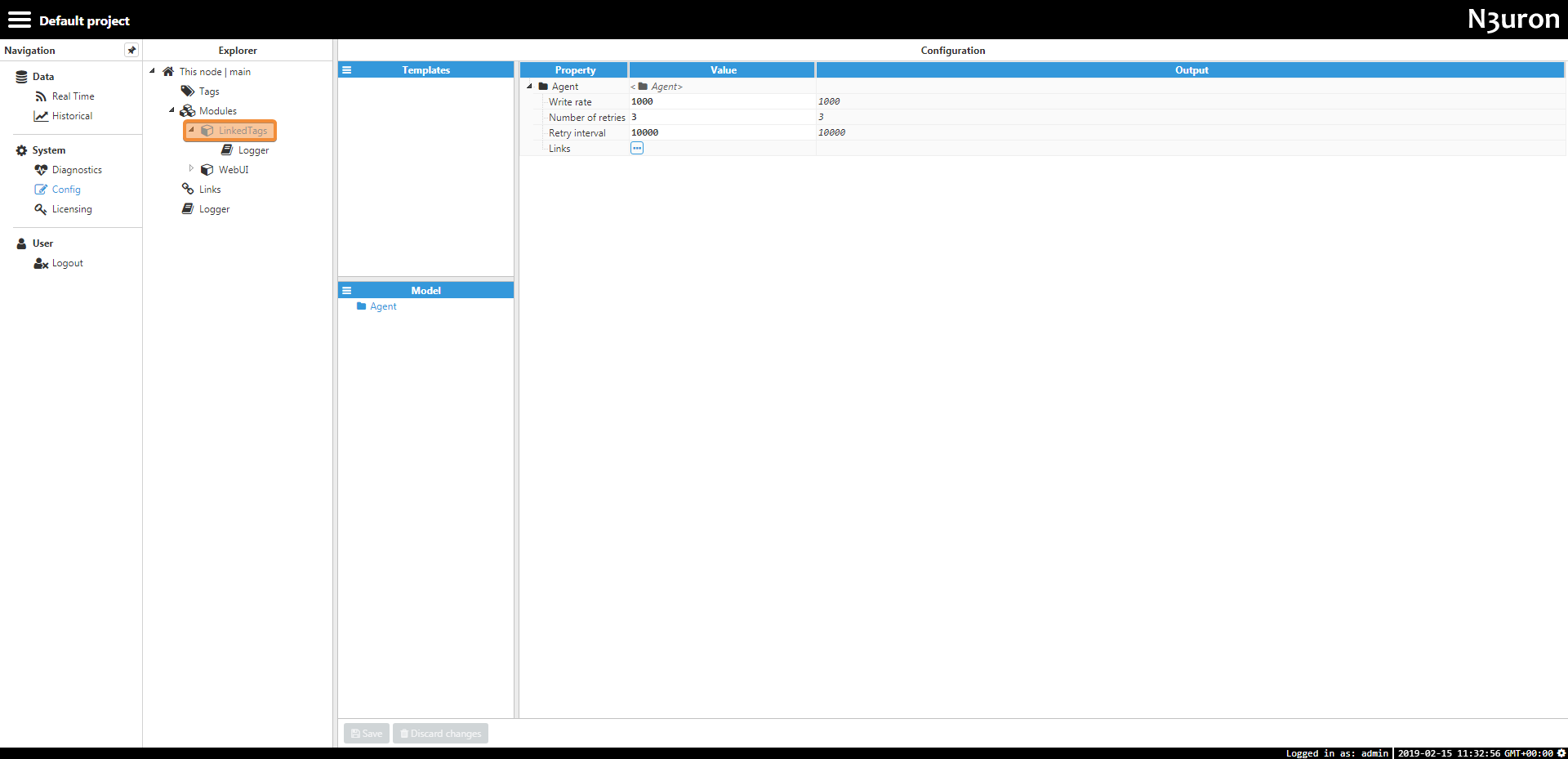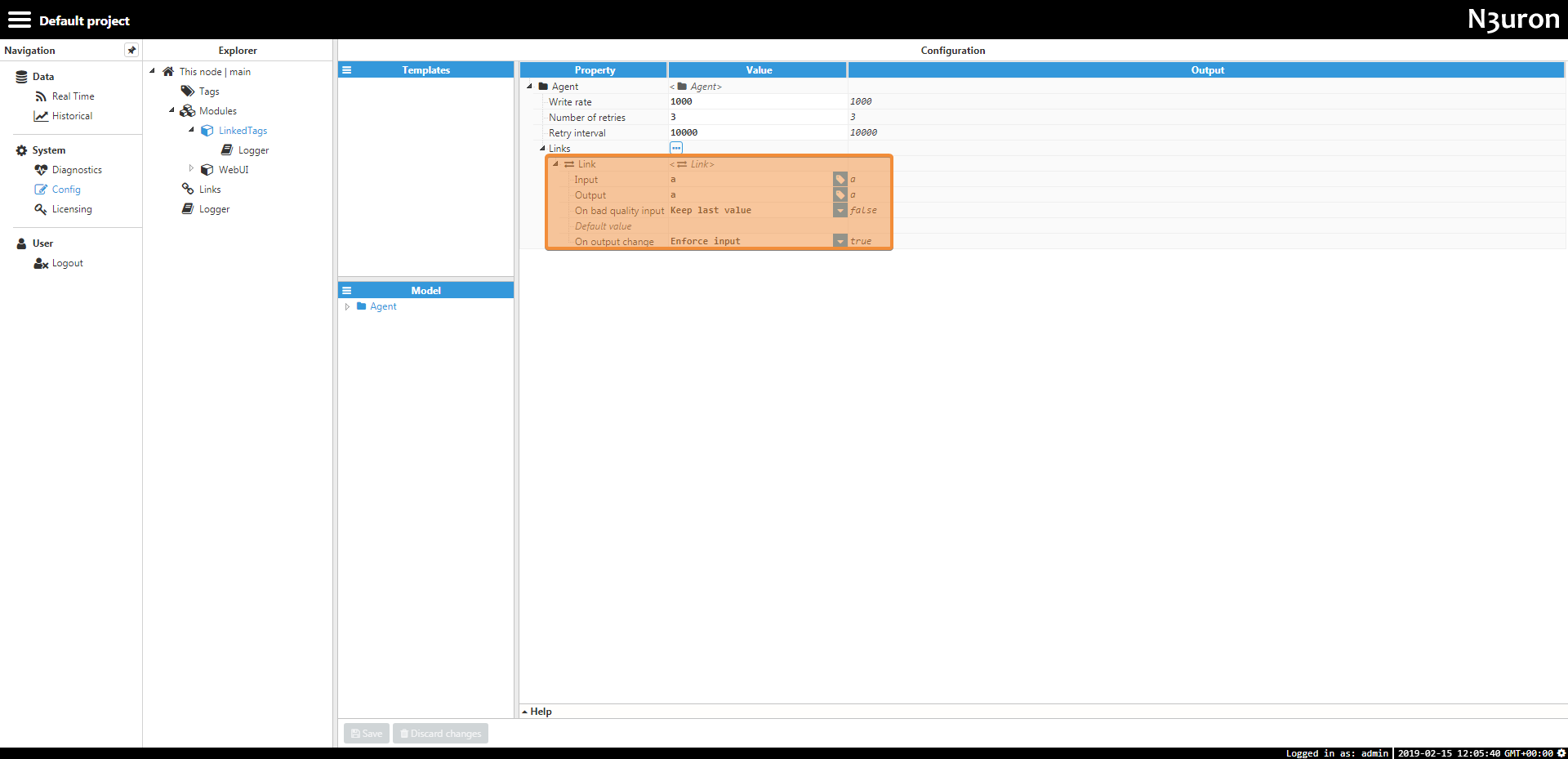Agent
An agent is where different links which share some common options are stored. Each agent has the following parameters, which effect all links contained within the agent:
 Figure 3: Agent configuration
Figure 3: Agent configuration
- Write rate: This value specifies the time between receiving a value in input and writing it to output. If several values are received during this period, only the most recent value will be written. This applies to nodes which have lost connection and start buffering data, so that when the connection is re-established, all of the data is sent at once. However, only the most recent value received during this period (which often corresponds to the real-time value) will be written. This value is displayed in milliseconds, with the minimum value set to 0, triggering it to be disabled and writing to the tag as soon as possible.
- Number of retries: This value is used to specify how many retries a value can have if it fails to be written. After this number of retries, the write process is aborted and the value is discarded.
- Retry interval: This value displays the delay between a failed write attempt and the next retry, shown in milliseconds. The minimum value is 1000 milliseconds.
- Links: Each agent can have one or more links.
Link
Each link, as the name implies, represents a link between a source tag and an output tag. The following screenshot shows an example of Link configuration.
 Figure 4: Link configuration
Figure 4: Link configuration
Source: This is the tag used as the source for the link.
Note:
Each source tag can have multiple outputs, and the value of a source can be copied to each tag. However, outputs can only have one source tag, therefore avoiding collisions when two tags try to write to the same tag.
- Output: This is the link’s destination tag. The source’s value will be copied to this tag.
- On bad quality input: This value controls the required action when an input tag is displaying as bad quality. The valid options are:
- Keep last value: The output tag will retain the last good value as long as the input tag is displaying as bad quality.
- Write default value: The output tag will take on the default value when the input tag is displaying as bad quality.
Note:
The output tag must have R/W permissions
- Default value: This option is used to specify the default value to write to the output tag when the input displays as bad quality.
- On output change: This dropdown controls the required action when the output tag changes values. The valid options are
- Enforce input: The last good input value (either the last good or the default value) will be written to the output whenever the output changes.
- Do nothing: The output will retain the changed value as long as the input doesn’t change. After the input changes the new input value will be written.